How to Get in Shape for Skiing & Snowboarding
DISCLAIMER: We hope that this does not come as a surprise to you, but you should be in good physical condition to participate in these exercises. evo is not a licensed medical care provider and represents that it has no expertise in diagnosing, examining, or treating medical conditions of any kind, or in determining the effect of any specific exercise on a medical condition. Consult with your physician if you are unsure. You should understand that when participating in any exercise or exercise program, there is the possibility of physical injury. If you engage in any of these exercises, you agree that you do so at your own risk, are voluntarily participating in these activities, assume all risk of injury to yourself, and agree to release and discharge evo from any and all claims or causes of action, known or unknown, arising out of evo's negligence.
You just got your fresh new pair of skis mounted with five coats of hot wax and your boots are molded and ready to rock, but are you? Don’t forget, the most important part of being able to charge hard all day and stomp landings with the least risk of injury is your physical condition. Correct form in skiing and snowboarding (or any sport for that matter) is crucial to staying injury free and maximizing the efficiency of your movements on hill. You fatigue throughout the day and your form deteriorates, leaving your legs feeling out of control and sloppy. You’ve probably experienced that close call before quitting for the day, where you couldn’t muster the leg strength to get your sticks or your board pointed in the right direction fast enough. Pre-season training will also decrease the soreness and sluggishness you get on your first day back on the slopes.
When talking about strength and training in the context of skiing and snowboarding, it is important to put emphasis on functional movement and strength. In reality, the best training for skiing is skiing itself. However, exercises that mimic rapid shifts in terrain, and shifts in your body’s center of gravity relative to the slope, will be effective in preparing your cardiovascular and muscle systems ready for the shred to come.
These are only recommended workouts. Always listen to your body and don’t do anything that hurts or over-exerts yourself.
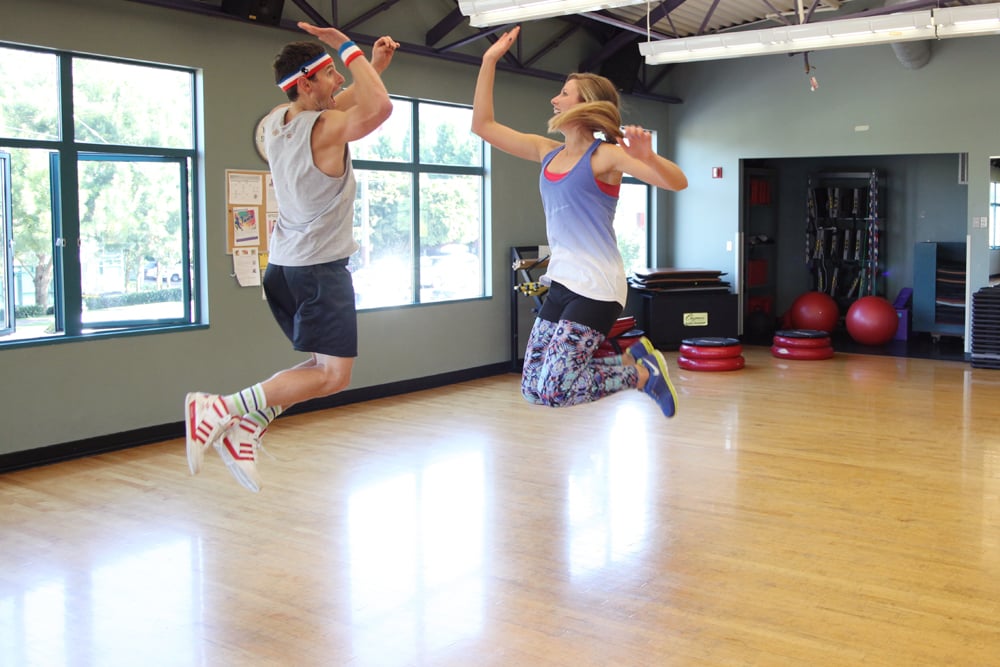
Flexibility
Whether before a workout or before a day of shred, paying time to work on your flexibility is important if you plan to stay mobile and active all winter (or in general). One of the best options for flexibility is yoga (which we highly recommend, haters be damned). Dynamic warm-ups before workouts and stretching after workouts are crucial if you want to recover faster and stay on the hill all winter long without injury.
Bikram Yoga Warm-Up:
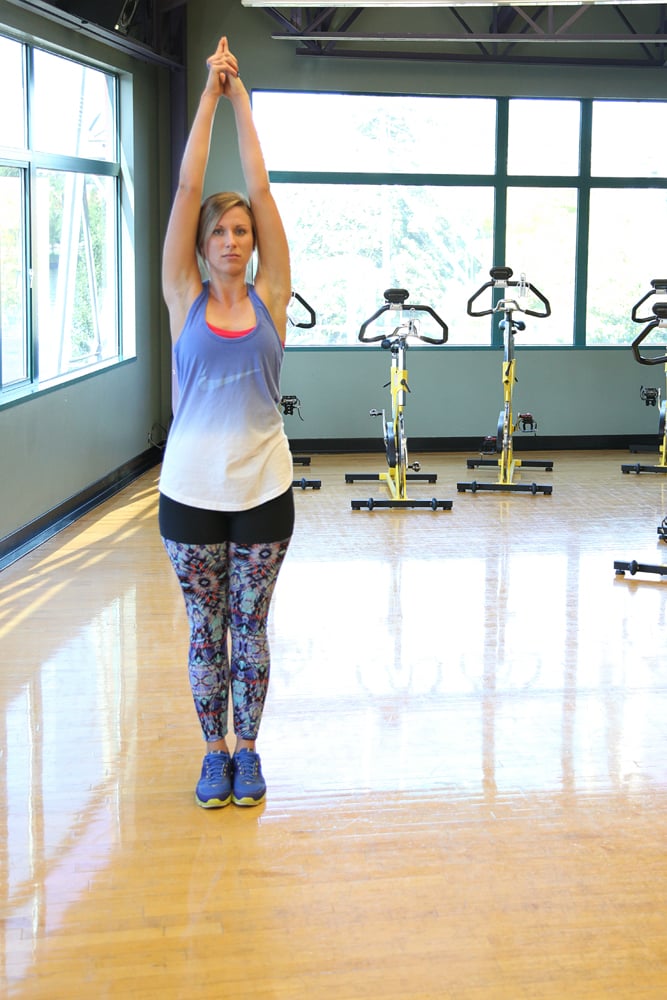
4. Deep Stretch: Crouch down and place your hands under the back of each heel so you are standing on them. Bend forward, hug your face to your knees, and slowly work towards straightening your legs out while pulling with your hands.

3. Back Bend: With arms still pointed straight up, look behind you and lean back while pushing your hips forward. Come back and bend your body all the way forward, touching your hands to the ground. With knees bent, alternate stretching out your hamstrings.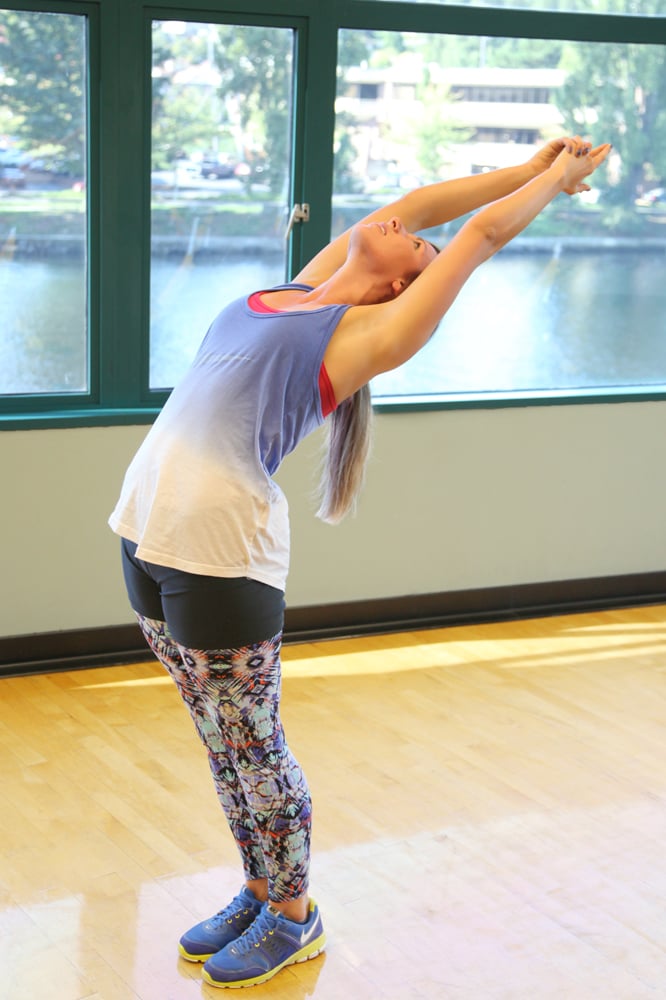
Other Warm-Up Examples:
- High Knee Walk /Skip / Run
- Straight-Leg Walk / Skip / Deadlift Walk
- Backward Run
- Backward / Forward Lunge Walks
- Hamstring Stretch
- Lateral Lunge
- Mountain Climbers
- Jumping Jack / Seal Jack / Ski Jack
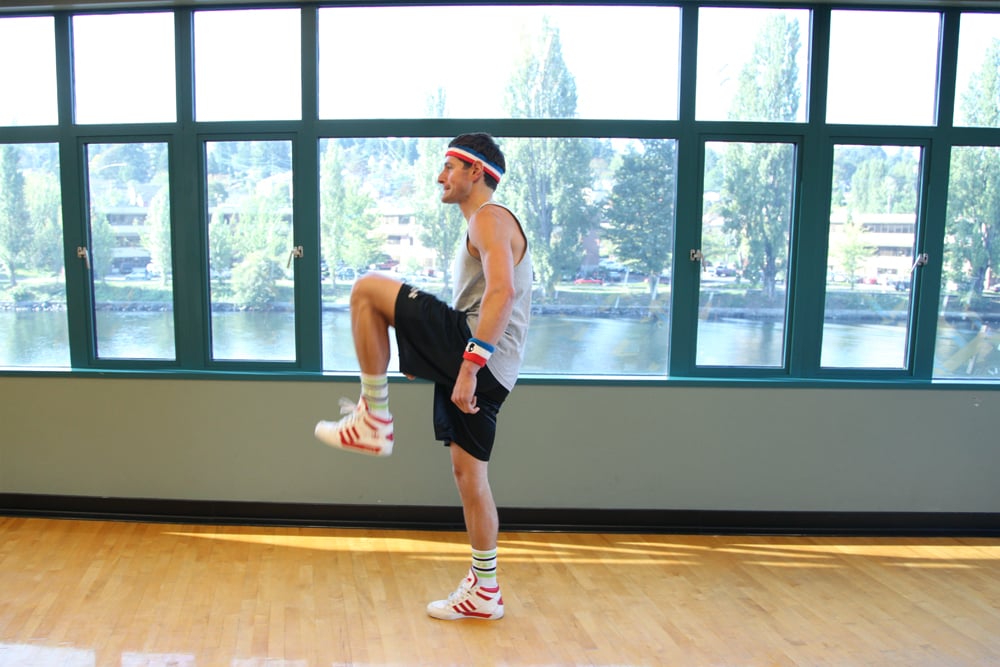 High Knee Walk
High Knee Walk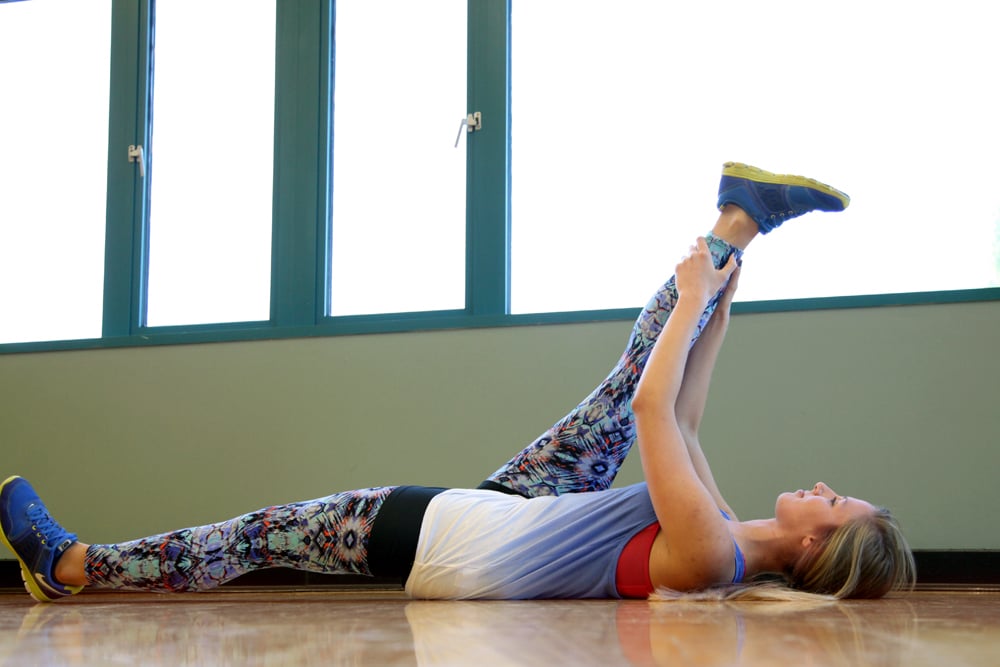 Hamstring Stretch
Hamstring Stretch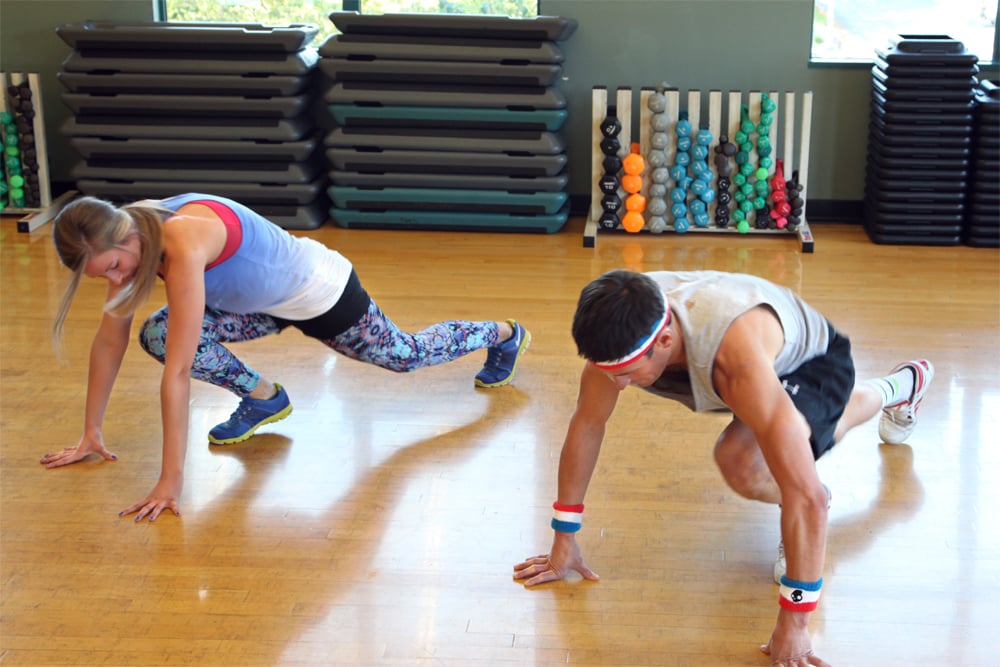 Mountain Climbers
Mountain ClimbersPost Workout Stretch Routine:
- Lunge: Hold for 60 seconds.
- Lizard: From a lunge, turn your foot out, drop the back leg, and put your arms out on the floor. Hold for 60 seconds.
- Triangle: From Lizard, straighten the front leg, drop the back heel, and bring your head down to your knee with your hands on the floor.
- Twist: Lift your upper body up and put your opposite hand outside your foot. Twist and point your other hand straight up into the air. Switch sides.
- Head to Knee: Straighten out and bend your head down to your knee again with hands on the floor. Switch sides.
- Downward Dog: Bring both legs back and extend your butt into the air, making a triangle with your body.
- Deep Stretch: Walk your hands towards your feet, try to get your hands under your feet, and hold.
Aerobic Base
Aerobic endurance allows you to sustain physical performance for sustained periods of time. In boiled down tech-talk, aerobic endurance maximizes your body’s ability to consume and distribute oxygen to your muscles efficiently. While anaerobic exercises don’t improve the power of our bio-mechanics, or the ability for us to put out more work over the shortest period of time, they do allow us to stay on the hill without getting burnt out before lunch.
Some basic examples of aerobic exercises are running, cycling, hiking, swimming, and jump rope. Performing any of these exercises for 30-60 minutes, 3-5 times per week will do a lot for your aerobic base.
 Cycling
Cycling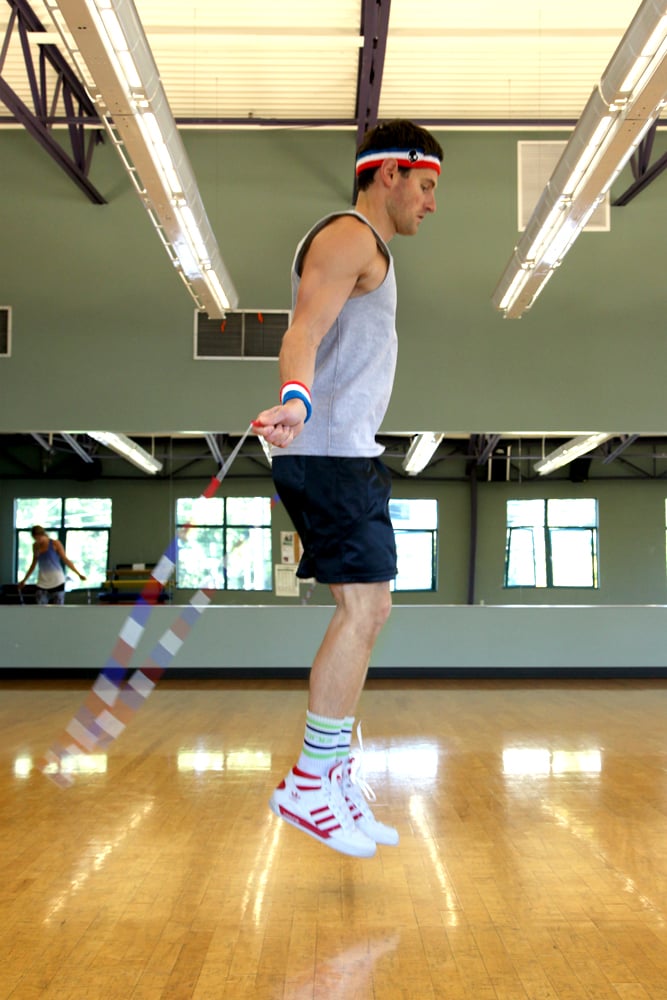 Jump Rope
Jump RopeAnaerobic Endurance
In “sciency speak” anaerobic endurance is your muscles’ ability to function in the absence of oxygen. In anaerobic metabolism, lactic acid builds up in your muscles. This mechanism causes that “burning“ sensation you get in your thighs mid run. Anaerobic exercises improve your body’s ability to process the build up of lactic acid, allowing you to send it for longer and harder. Many anaerobic workouts involve High Intensity Interval Training (HIIT), with periods of intense effort followed by rest periods and then by intense efforts again for a number of repetitions. One example of an anaerobic workout is Fartlek training, which is Norwegian for speed play training.
Try this one for size. On a 2-4 mile run, perform 1-3 (depending on fitness level) of the following 10-minute strength intervals:
- 1 minute of burpees
- 30 seconds of easy jog
- 2 minutes of burpees
- 1 minute of easy jog
- 3 minutes of burpees
- 1.5 minutes easy jog
These workouts are usually pretty intense, but pay dividends on the slopes.
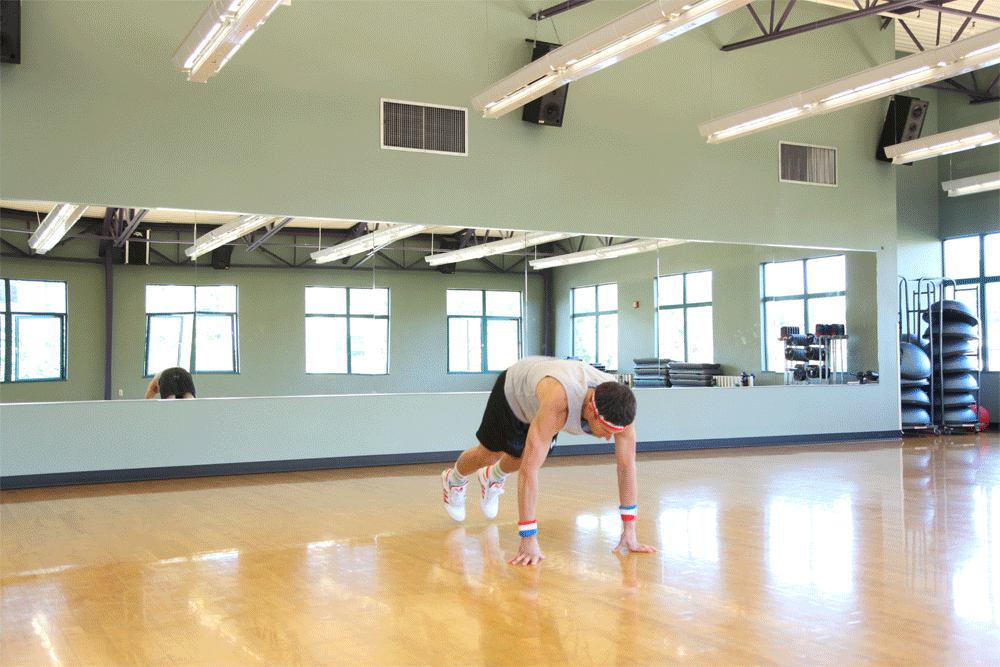 Burpee
BurpeeStrength and Power
Let’s face it, not all of us are blessed with the Champagne Powder of Steamboat or Cold Smoke of Bridger Bowl. Strength workouts improve your ability to bust crud and keep your skis pointed the direction you want in the thickest and dampest of Pacific Northwest Pow.
Some basic examples of strength and power workouts are:
- Squats (weighted or unweighted)
- Box jumps
- Lateral Side Jumps (these closely mimic a skier movement laterally across a slope)
- Medicine ball throws
- Planks
 Squat
Squat Box Jump
Box Jump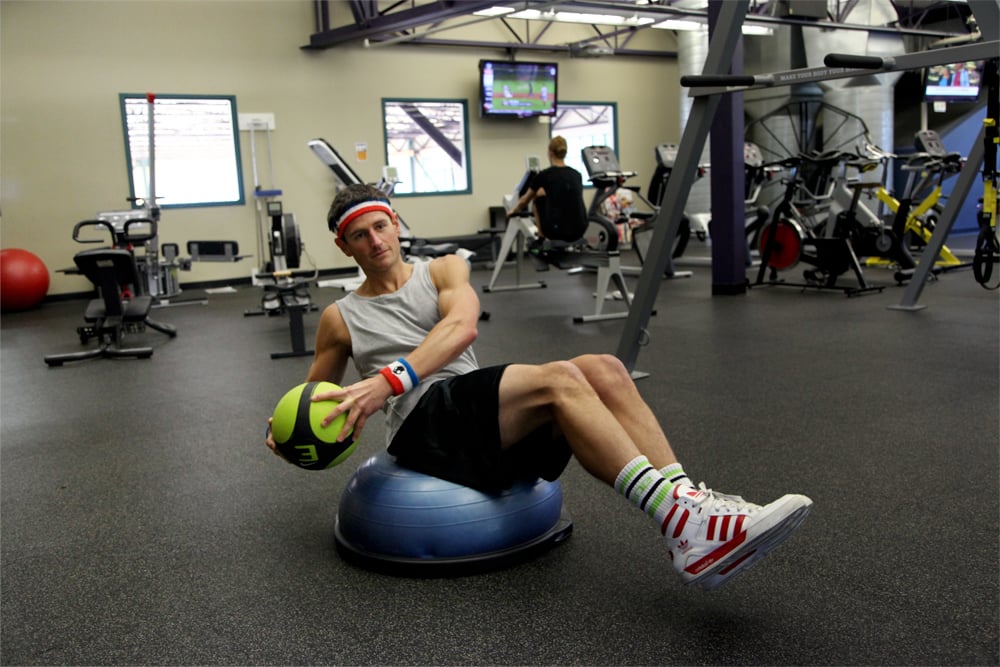 Medicine Ball
Medicine Ball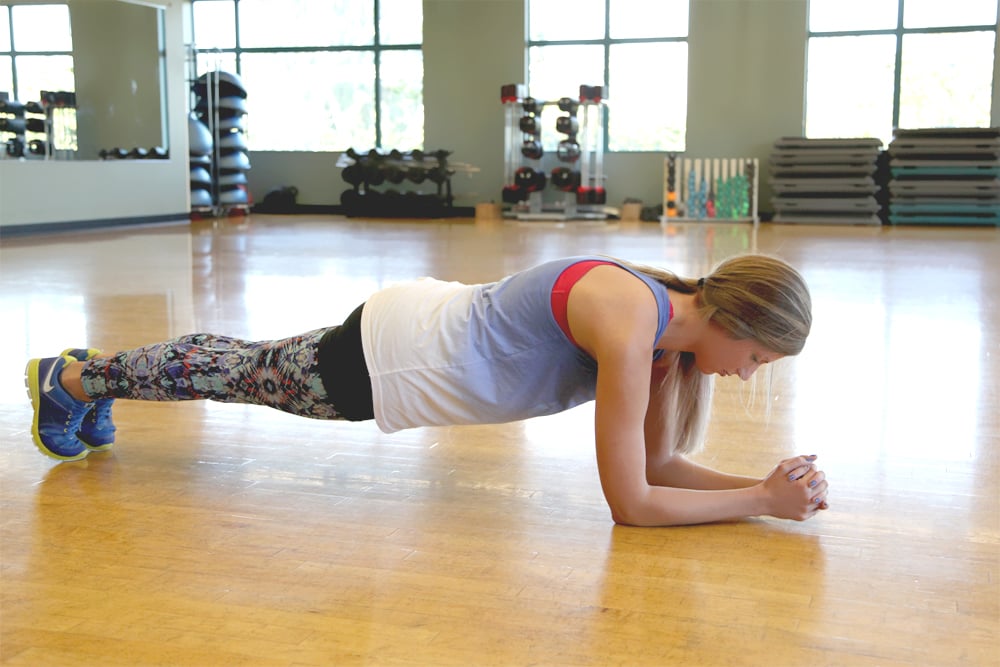 Plank
PlankAnother workout to use in the gym regularly is (a treadmill helps with pacing) Dynamic Stretching followed by 1-mile warm-up run @ 7:30 pace followed by 1-3 sets of the following intervals:
- 10 Burpees
- 15 Bodyweight Squats
- 400 Meter Run at 9 mph
- 14 (7 a side) 25 lb. T-Push Up: Lift one are into the air after each push up.
- 8 Pull Ups
- 400 Meter Run at 9 mph
- 10 15 lb. Medicine Ball Throws
- 20 Lateral Side Jumps (10 a side)
- 400 Meter Run at 9 mph
While getting at it outdoors is the favored choice for staying fit throughout the summer and into ski season (and just getting stoked on life in general), performing aerobic, anaerobic, and strength and power workouts in the pre-season can do wonders for your performance on hill.
Learn More With Our Other Ski Guides:
Skis - Kids' Size Chart and Buyer's Guide
Skis - Rocker Technology Explained
Ski Bindings – How to Choose & DIN Setting Chart
Ski Boots - Sizing & Buyer's Guide
Ski Boots - Boot Sole & Ski Binding Compatibility
Ski Boots – How to Make Your Boots Fit Better
Ski Poles - Size Chart
Skiing - Beginner Skiing Tips
Skiing - How to Fly With Skis
Skiing - How to Get in Shape
Ski Maintenance - Base Repair
Ski Maintenance – How to Store for the Summer
Ski Maintenance – How to Tune
Ski Maintenance – How to Wax
Gloves & Mittens - How to Choose
Goggles - How to Choose
Goggles - Wearing Goggles with Glasses
Helmets - How to Choose & Fit Guide
Outerwear - What to Wear Skiing & Snowboarding
Outerwear - How to Wash Waterproof Jackets & Clothing
Outerwear - Regional Ski & Snowboard Guide
Ski Socks - Sizing & Buyer's Guide
Avalanche Probes - How to Choose
Backcountry - Choosing an Avalanche Airbag Pack
Backcountry - Choosing an Avalanche Beacon
Backcountry - Climbing Skins Size Guide
Backcountry - Dynafit / Tech Binding Basics
Backcountry - How to Buy Alpine Touring Bindings
Backcountry - How to Buy Alpine Touring Ski Boots
Backcountry - How to Choose an Avalanche Shovel
Backcountry - How to Choose Climbing Skins
Backcountry Backpacks - How to Choose
Backcountry Basics - How to Get Started
Discover Our Favorite Gear:
The Best Women's Skis
The Best Beginner Skis
The Best All Mountain Skis
The Best Powder Skis
The Best Touring Skis
The Best Carving Skis
The Best Park Skis
The Best Intermediate Skis
The Best Freeride Skis
The Best Ski Bindings
The Best Touring Ski Bindings
The Best Men's Ski Boots
The Best Women's Ski Boots
The Best Touring Boots
The Best Ski Socks
The Best Beginner Ski Boots
The Best Value Skis
The Best Ski Poles
The Best Kids' Skis
The Best Kids' Ski Boots
The Best Cross Country Ski Boots
The Best Ski Boot Liners
The Best Gifts for Skiers
Learn More With Our Other Snowboard Guides:
Snowboards - Snowboard Rocker Explained
Snowboards - Kids' Snowboards Size Chart
Snowboards - How to Choose a Freestyle Park Setup
Snowboards - How to Choose Snowboard Shapes
Asymmetrical Snowboard Shapes Guide
Snowboard Boots - How to Choose & Fit Guide
Snowboard Boots - How to Put on & Fit
Snowboard Bindings - How to Choose & Compatibility Guide
Snowboard Bindings – How To Set Up
How to Wax a Snowboard
Socks - How to Choose Snowboard Socks
Gloves & Mittens - How to Choose
Goggles - How to Choose
Goggles - Wearing Goggles with Glasses
Helmets - How to Choose & Fit Guide
Outerwear - What to Wear Snowboarding
Outerwear - How to Wash Waterproof Jackets & Clothing
Outerwear - Regional Snowboard Guide
Snowboard Socks - Sizing & Buyer's Guide
Snowboarding - How to Get in Shape
Travel - How to Fly with Snowboards
Splitboarding - Board and Binding Weight Chart
Avalanche Probes - How to Choose
Backcountry - Choosing an Avalanche Airbag Pack
Backcountry - Choosing an Avalanche Beacon
Backcountry - Climbing Skins Size Guide
Backcountry - How to Choose an Avalanche Shovel
Backcountry - How to Choose Climbing Skins
Backcountry Backpacks - How to Choose
Backcountry Basics - How to Get Started
Discover Our Favorite Gear:
The Best Women's Snowboards
The Best All Mountain Snowboards
The Best Directional Snowboards
The Best Powder Snowboards
The Best Park Snowboards
The Best Splitboards
The Best Freeride & Big Mountain Snowboards
The Best Beginner Snowboards
The Best Value Snowboards
The Best Carving Snowboards
The Best Men's Snowboard Boots
The Best Women's Snowboard Boots
The Best Snowboard Bindings
The Best Splitboard Bindings
The Best Snowboard Step On Bindings & Boots
The Best Kids' Snowboards
The Best Beginner Snowboard Boots
The Best Kids' Snowboard Boots
The Best Gifts for Snowboarders
This is evo. We are a ski, snowboard, wake, skate, bike, surf, camp, and clothing online retailer with physical stores in Seattle, Portland, Denver, Salt Lake City, Whistler, Snoqualmie Pass, and Hood River. Our goal is to provide you with great information to make both your purchase and upkeep easy.
evo also likes to travel to remote places across the globe in search of world-class powder turns, epic waves, or legendary mountain biking locations through evoTrip Adventure Travel Trips. Or, if you prefer to travel on your own, check out our ski & snowboard resort travel guides and mountain bike trail guides.
Still have questions? Please call our customer care team at 1.866.386.1590 during Customer Care Hours. They can help you find the right setup to fit your needs.